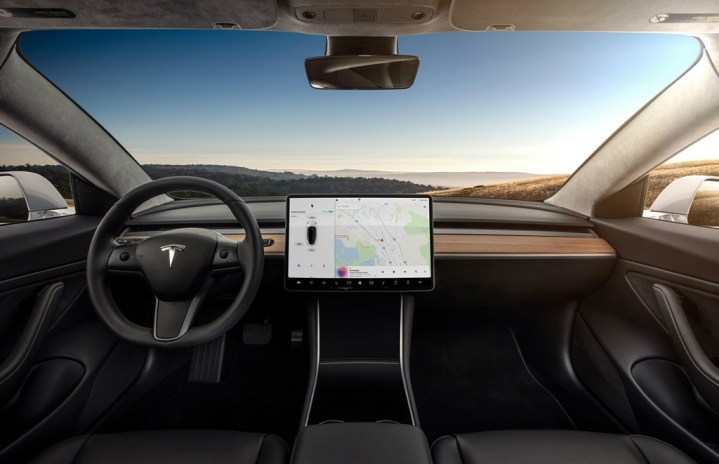
The promise of autonomous vehicles includes the idea that cars with robotic pilots at the helm will be able to keep us safer. The more self-driving cars on the road, the less likely the possibility a human-caused error occurs. Of course, if those autonomous systems suffer from issues of their own, then they just put us at risk in other ways. Researchers at Tencent Keen Security Lab recently published a paper that shows some of the flaws in self-driving technology — specifically the software used in Tesla’s Autopilot.
The most troubling attack highlighted in the paper was one of the simplest to execute. According to the paper, the researchers were able to trick Tesla’s Autopilot functionality into changing lanes and losing its position on the road by adding noise to lane markings. In one instance, small, red stickers were placed on the ground to make the vehicle believe it needed to change lanes. The attack could force a vehicle into oncoming traffic. The attack worked in daylight and didn’t require any sort of interference like snow or rain that might make things more difficult for the Autopilot system to process the road.
Some of the hacks discovered by the security experts sound like the stuff of movies. In one example, after bypassing several layers of protection designed to keep attackers out, the researchers were able to write an app that allowed them to hijack the Tesla steering functionality. With the app, an attacker could use a video game controller or smartphone to steer a vehicle. The commands would override Tesla’s Autopilot systems as well as the steering wheel itself. The attack had some limitations on cars that recently shifted from reverse to drive, but could fully take over a car in park or cruise control.
“This kind of attack is simple to deploy, and the materials are easy to obtain,” the researchers wrote. “Our experiments proved that this architecture has security risks and reverse lane recognition is one of the necessary functions for autonomous driving in non-closed roads. In the scene we build, if the vehicle knows that the fake lane is pointing to the reverse lane, it should ignore this fake lane and then it could avoid a traffic accident.”
The security researchers at Tencent Keen Security Lab informed Tesla of the issues and Tesla has reported the problems have been addressed in recent security patches.
Editors' Recommendations
- Tesla’s Autopilot can be easily tricked, engineers find
- Driving hands-free with Enhanced Super Cruise in the 2021 Cadillac Escalade
- New Tesla self-driving software could reduce driver interventions by one third
- Tesla driver using Autopilot suspected of DUI after crashing into Arizona cop car
- Cadillac Super Cruise vs. Tesla Autopilot


